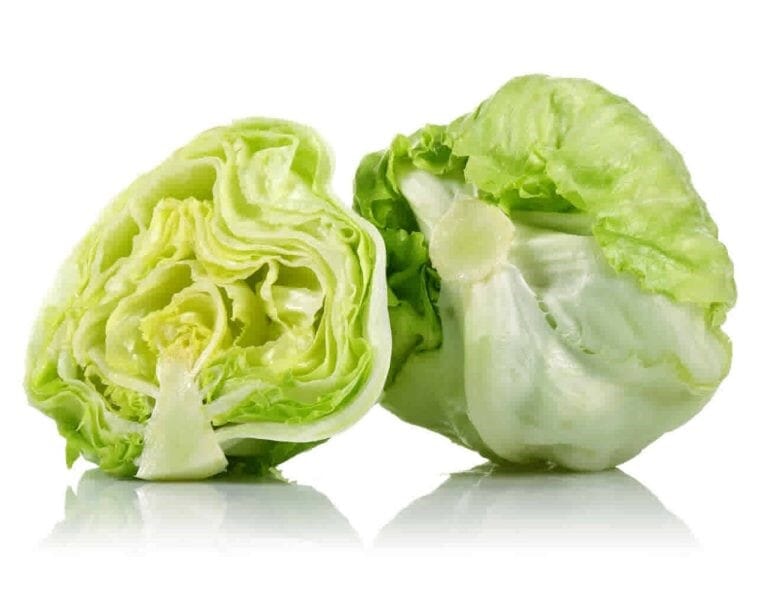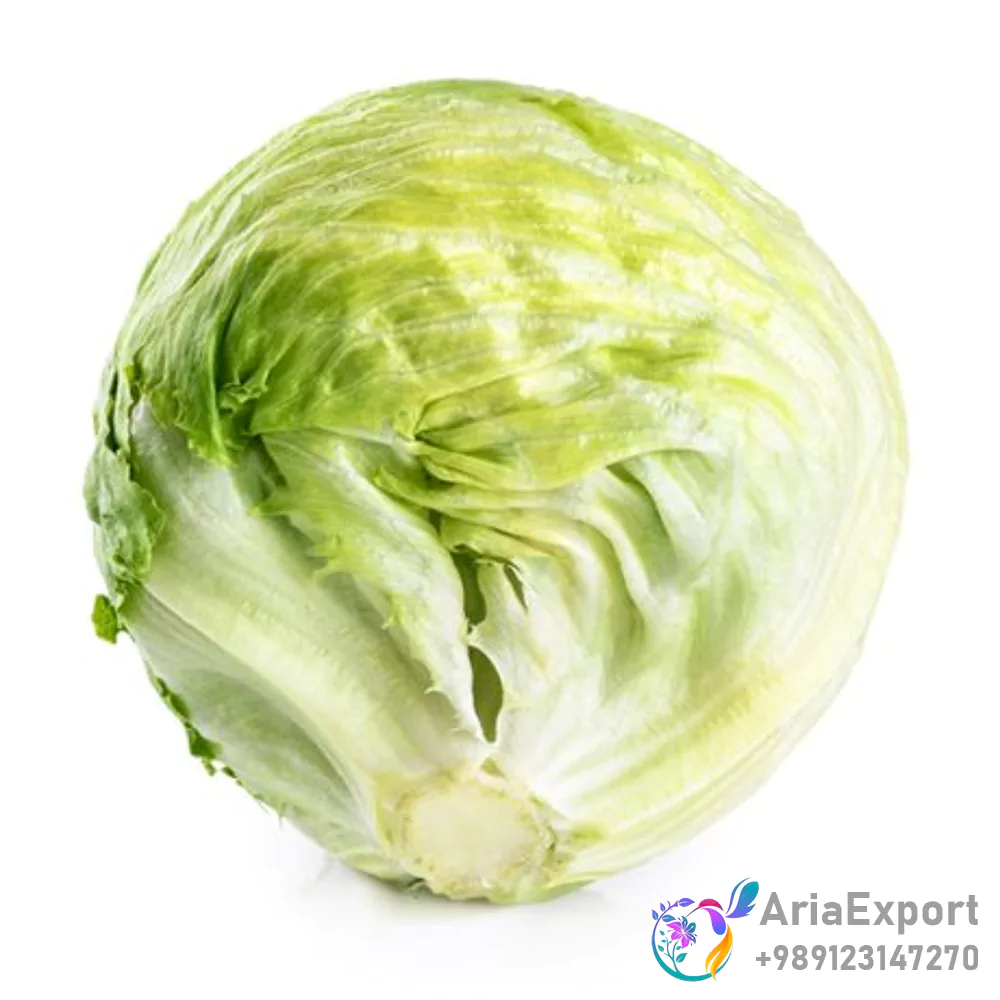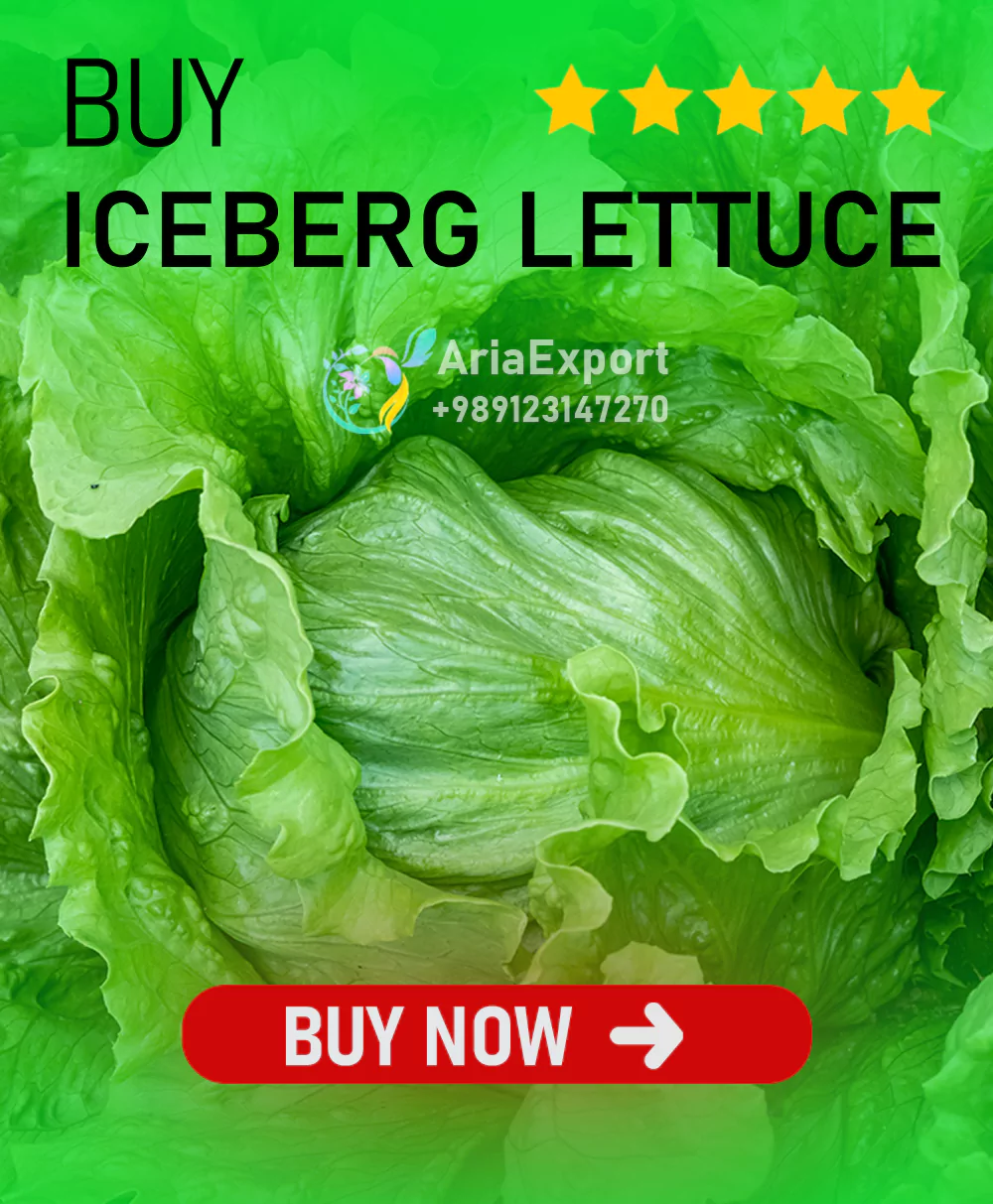
Iceberg lettuce, also known as crisphead lettuce, has pale green leaves and grows in cabbage like heads. It thrives in cool climates and needs a long winter season for full growth. is a popular type of lettuce primarily grown in the United States, particularly in states like California (Santa Maria and Salinas) and Arizona (Yuma). other major producers include China, Spain, and Iran.
What is Iceberg lettuce?
Iceberg Lettuce, also known as crisphead lettuce, is a popular type of lettuce with firm, crunchy leaves and a mild flavor. Rich in water and low in calories, it can be eaten raw in salads, sandwiches, and burgers or cooked similarly to cabbage. Its pale green leaves form tight, cabbage like heads, making it a versatile ingredient in many dishes.
The name "iceberg" comes from the 1920s when California farmers shipped this lettuce in ice filled containers to keep it fresh during transport.
Iceberg lettuce thrives in cool climates and requires a long winter season for optimal growth. Like other leafy greens, it adds a crisp texture and refreshing taste to meals, enhancing the overall dining experience.

Read More: Sultana Raisins Benefits
Iceberg Lettuce Nutritional Facts
Leafy greens, like lettuce, are key parts of a healthy diet. Iceberg lettuce is loved for its crisp texture and mild flavor, making it a favorite in households, restaurants, and for kids who may avoid bitter greens.
| Nutrition Facts for Iceberg Lettuce (Per 1 Cup Serving) | ||
| Nutrient | Amount Per Serving | % Daily Value* |
| Calories | 10 | - |
| Total Fat | 0g | 0% |
| Saturated Fat | 0g | 0% |
| Trans Fat | 0g | - |
| Polyunsaturated Fat | 0g | - |
| Monounsaturated Fat | 0g | - |
| Cholesterol | 0mg | 0% |
| Sodium | 5mg | 0% |
| Total Carbohydrate | 2g | 1% |
| Dietary Fiber | 1g | 4% |
| Total Sugars | 1g | - |
| Includes 0g Added Sugars | - | 0% |
| Protein | 0g | 0% |
| Vitamin D | 0mcg | 0% |
| Calcium | 13mg | 0% |
| Iron | 0.3mg | 2% |
| Potassium | 102mg | 2% |
| Vitamin A | 18mcg | 2% |
| Vitamin C | 2mg | 2% |
| Vitamin K | 17mcg | 15% |
| Folate | 21mcg | 6% |
| Phosphorus | 14mg | 2% |
| Magnesium | 5mg | 2% |
| Zinc | 0.11mg | 0% |
The Daily Value percentage (%DV) indicates how much a nutrient in a serving of food contributes to the daily needs of a 2,000 calorie diet.

Key Facts
- Iceberg lettuce is very low in calories (only 10 calories per cup) and has minimal fat, cholesterol, or protein.
- It is a good source of fiber (4% DV), vitamin K (15% DV), and folate (6% DV).
- Other nutrients, including potassium, vitamin A, vitamin C, iron, phosphorus, and magnesium, are present in smaller amounts (2% DV).
Read More: Piarom Dates
Iceberg Lettuce Benefits
Iceberg lettuce is a great choice for those who eat few vegetables. it’s mild, sweet, and crisp texture makes it enjoyable, and despite being less nutrient dense than other lettuces, it’s rich in vitamins A, K, and folate. Iceberg lettuce provides many health benefits for you and your family.
1. May Improve Gut Health
Iceberg lettuce is rich in fiber, which is linked to numerous health benefits. According to a study, fiber improves gut health by preventing hemorrhoid formation. It also promotes bowel movements by absorbing water and softening stool. With its low calorie content, eating more iceberg lettuce means increasing your fiber intake.
2. May Promote Heart Health
Animal studies suggest that regular lettuce consumption supports heart health. Lettuce may increase the excretion of total cholesterol and enhance the body’s antioxidant status.
3. May Help Regulate Cholesterol Levels
Regular lettuce consumption has been shown to boost cholesterol metabolism. In one study, mice fed lettuce for three weeks showed a significant reduction in liver cholesterol levels. Their LDL/HDL cholesterol ratio also improved.
4. May Aid in Weight Management
A study found that a salad made with lettuce, carrots, celery, and cucumber improved satiety and reduced food intake. This may contribute to healthy weight loss. Regular consumption of lettuce in salads is highly recommended for effective weight management and improved digestion.

5. Supports Blood Clotting
Iceberg lettuce is rich in vitamin K, which helps with blood clotting. Individuals with blood clotting issues may benefit from a diet high in vitamin K. However, vitamin K deficiency is rare for most people. If you have a history of bleeding disorders or liver disease, consult your doctor to determine if you need more vitamin K in your diet.
6. Supports Eye Health
Iceberg lettuce is high in vitamin A, a nutrient that supports eye health. Vitamin A can help prevent age-related vision loss and improve vision in low light conditions. If you experience night blindness, adding more vitamin A to your diet may be beneficial.
7. May Improve Skin Health
Iceberg lettuce is rich in vitamin C and aids in hydration. Research shows that vitamin C reduces skin dryness, sagging, and hyperpigmentation. It may also delay signs of aging.
8. Supports Fetal Development
Folate, or folic acid, is a nutrient found in iceberg lettuce. Folic acid is essential for fetal development, especially in the first trimester. This is why doctors often recommend folic acid supplements to pregnant women or those trying to conceive.
| Nutrients and Their Health Benefits | ||
| Nutrient | Health Benefit | Function |
| Vitamin C | Boosts Immune System | Acts as a powerful antioxidant to keep the immune system healthy. |
| Calcium | Supports Bone and Muscle Health | Keeps bones and teeth strong, supports muscle function, nerve function, and blood clotting. |
| Vitamin K | Prevents Bone Fractures and Aids Clotting | Works with calcium to prevent bone fractures, essential for blood clotting. |
| Vitamin A (as Beta Carotene) | Supports Eye Health and Cell Growth | Acts as an antioxidant, maintains night vision, supports eye health, and promotes cell growth. |
| Folate | Supports DNA Synthesis and Fetal Development | Helps make DNA and genetic material, crucial for pregnant women or those planning pregnancy. |
| Potassium | Reduces Blood Pressure | Lowers blood pressure by counteracting the effects of salt in the diet. |
Iceberg Lettuce Characteristics
You can view the properties of iceberg lettuce in the table below:
| Characteristics of Iceberg Lettuce | |
| Characteristic | Details |
| Color | Pale core with dark green outer leaves |
| Texture | Very crisp, especially in the heart of the head |
| Flavor | More sweet than bitter, mild taste |
| Type | Crisphead Lettuce |
| Growing Climate | Cool climate, requires a long winter season |
| Harvesting Method | Hand-harvested with specialized knives |
| Shelf Life | Longer shelf life compared to other lettuces |
| Culinary Uses | Salads, sandwiches, wraps |
| Head Size | Approximately 10 to 12.5 cm in diameter at harvest |
| Water Content | About 96% water, contributing to its crispness |
Differences Between Iceberg Lettuce, Green Leaf Lettuce, and Romaine
You can view these differences in the table below:
| Comparison of Iceberg, Romaine, and Butterhead Lettuce | |||
| Characteristic | Iceberg Lettuce | Romaine Lettuce | Butterhead Lettuce |
| Type | Crisphead | Romaine (Cos) | Butterhead (e.g., Boston, Bibb) |
| Shape | Round, tightly packed head | Tall, upright, loosely packed head | Small, loosely packed head with a rosette shape |
| Color | Pale core, dark green outer leaves | Dark green outer leaves, lighter green inside | Light green, sometimes with reddish edges |
| Texture | Very crisp, crunchy | Crisp with a sturdy rib down the center | Soft, tender, buttery texture |
| Flavor | Mild, slightly sweet | Mildly bitter, slightly nutty | Mild, buttery, slightly sweet |
| Nutritional Value | Lower in nutrients, high water content (96%) | Higher in vitamins A, C, K, and folate | Moderate nutrients, good source of vitamins A and K |
| Common Uses | Salads, sandwiches, wraps, wedge salads | Caesar salads, grilling, wraps | Salads, lettuce cups, garnishes |
| Shelf Life | Longer shelf life due to tight head | Moderate shelf life, less durable | Shorter shelf life, more delicate |
Aria Export: Where You Can Buy Iceberg Lettuce!
If you are interested in purchasing iceberg lettuce from Iran, Aria Export is a trusted name in supplying and exporting this product. With over three decades of continuous experience in exporting Iranian agricultural products worldwide, our company is at your service. For more information about pricing and purchasing, you can visit our page on "Online Pricing and Buy Iceberg Lettuce" You can also connect with us now via WhatsApp.
